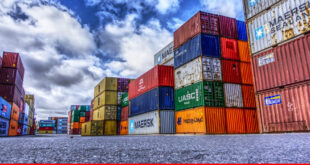While announcing its monetary policy for next two months, the State Bank of Pakistan (SBP) decided last month to keep the benchmark interest rate unchanged at 10 percent. The analysts see no rationale to maintain the discount rate at 10 percent by the central bank as all fundamentals are in favor of a reduction in the interest rate. So far as inflation is concerned, the average Consumer Price Index (CPI) inflation in the fiscal year 2013-14 has remained in single digits (8.6 percent) for the second consecutive year, with the SBP expecting the CPI to clock up at 7.5-8.5 percent in the fiscal year 2014-15. Compared to 15.9 percent in the fiscal year 2012-13, the year-on-year growth in broad money decelerated to 12.5 percent in the fiscal year 2013-14, which is the lowest monetary expansion during the last three years. Critics say that the government is maintaining high interest rates under the dictate of the International Monetary Fund (IMF). Under IMF pressure, the country’s central bank last time raised its benchmark interest rate to 10.0 percent from 9.5 percent. High interest rate has been the key reason behind the low growth in the industrial production and closure of many industrial units in the country.
The IMF saved Pakistan from possible default by agreeing last year to lend it $6.7 billion over three years. The cash is being doled out in installments and could stop if Pakistan fails to institute reforms, including cracking down on tax evasion and privatizing loss-making state companies. The government sought IMF loan less than six years after the country’s last IMF bailout. The country direly needed loan to repay the Fund nearly $5 billion that the country still owes. Under the loan deal, the IMF conducts periodic reviews in order for its executive board to approve installments of $550 million spread out over three years. Islamabad had to commit to take measures designed to increase growth and improve financial stability.
The increase in interest rate was in line with requirements set by the IMF to approve the much-needed second tranche of $550 million under the Fund’s $6.7 billion loan approved in September last year. The tight monetary policy has blatantly failed to tame the surging inflation. Critics say that high interest rate will only benefit the lenders but affect the all industrial and export-oriented sectors damaging the shabby investment climate in the country. The business community regrets that high interest rate will increase the cost of production at a time when the country has comparatively low productivity compared with India, Bangladesh and Sri Lanka. The tight monetary policy has not allowed the private sector to play its key part as engine of growth. The increased interest rate has not only made doing business increasingly expensive but also marginalized the private sector. High borrowing costs discouraged the demand for private sector credit, which in turn decreased private investment adversely affecting the prospects of economic growth.
Pakistan’s entry into an IMF program in 2008 caused a significant economic slowdown and the former government faced a major challenge in managing a slowing economy. Under IMF dictates, the central bank raised discount rate to 15 percent in November 2008, and kept it unchanged in its monetary-policy statement on January 31, 2009. Despite high interest rate, the core-inflation remained at a higher side clearly indicating that this policy did not yield the required results. Tight monetary policy stagnated the growth and consequently closure of industries dried up government revenue.
IMF has so far been appreciative of the government that has met nearly all of its quantitative performance markers and recognized that its economy was showing signs of improvement, while its reform program remains broadly on track. The analysts are however concerned that economic reform could hurt the millions of Pakistanis who live in poverty on less that $2 a day. The government has launched many projects in energy sector, but the power crisis continues to worsen affecting industry and the daily life. The rupee has witnessed strong recovery against the US dollar, yet the people are still hard hit by soaring commodity prices. Pakistan inflation scene is currently dominated by food inflation, which is hurting low-income groups disproportionately. The relentless surge in prices of essential commodities has eroded the purchasing power of middle and lower income groups in Pakistan. The inflation has hit poor consumers harder than the more affluent ones, as for each one percent increase in inflation, more and more people fall into poverty. Due to persistent high food inflation, the contribution of food group in overall inflation has increased. Food inflation for the lower-middle income group has so far been the highest, showing that this group is more vulnerable, given the constraints to avail targeted subsidy through utility stores compared to low income group.
Persistent increases in oil prices over the past few months and surging energy costs have pushed prices of essential food items to an unprecedented level. Today, a common man in the country is unable to meet the basic needs of life including food, cloth and housing. The government has still not even ensured the provision of subsidized flour, pulses, meat and ghee to the poor. The poor are highly sensitive to the price changes in food, particularly staple food items. The experts believe that rising food prices can undermine the gains from poverty reduction and human development that the country has experienced for the last five years. Households struggling to meet the minimum standards of living might have no choice but to cut down their expenditures on health and children’s education.
Tight monetary policy has been a failure to control soaring inflation at least in case of Pakistan where the negative impact of exchange rate parity, and increase in petroleum prices, coupled with high power and gas rates, have been making an adverse impact on prices. The hike in interest rate actually acts as an upshot to inflation and prices of consumer goods multiply owing to increased cost of manufacturing and doing business. The reduction in discount rate to single digit could provide some relief to the ailing industry and trade. The critics say that even the foreign assistance could not prevent the deterioration of the economy, as irrationally high interest rates and tight monetary policy of the central bank is holding back its growth.
 PAGE Blog Business Weekly Magazine
PAGE Blog Business Weekly Magazine

